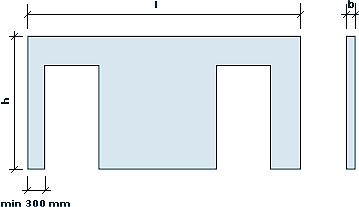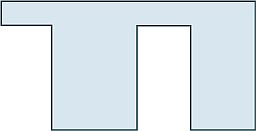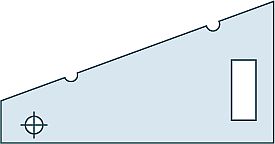The function of reinforced concrete internal walls often depends on the type of construction. Walls can therefore be divided into three groups:
- load-bearing internal walls,
- separating internal walls,
- stiffening internal walls.
The main factor for choosing the thickness of reinforced concrete internal walls is the requirements for sound insulation and fire resistance as well as constructional requirements and, in rare cases, their load-bearing capacity.
The table below indicates the sound insulation and fire resistance of reinforced concrete internal walls according to their thickness:
| Wall thickness mm | Fire resistance as designed min. | Sound insulation dB |
| 120 | 60 | 49 |
| 140 | 90 | 51 |
| 160 | 120 | 53 |
| 180 | – | 55 |
| 200 | 180 | 57 |
In reality, walls are usually 100, 120, 150, 180 or 200 mm thick.



Internal walls can be divided into two groups based on the manufacturing method:
Vertically cast walls
The elements are cast vertically and, therefore, both sides of the elements have moulded surface. From the economical perspective, vertical casting is recommended in the case of repetitive elements of a simple geometry.
Maximum dimensions of the elements:
Thickness 100…180 mm
Length 7,000 mm
Height 3,000 mm
Weight 10 tons
Horizontally cast walls
The elements are cast horizontally and, therefore, one side of the elements has moulded surface and the other side can have the following finishing:
- steel-floated surface
- rolled surface
- brushed surface
Horizontal casting is used for complex elements with small repeatability.
Maximum dimensions of the elements:
Thickness 100…240 mm
Length 12,000 mm
Height 3,800 mm
Weight 12 tons
Plastic tubes and junction boxes for electrical wiring can be installed in the internal wall element during casting.